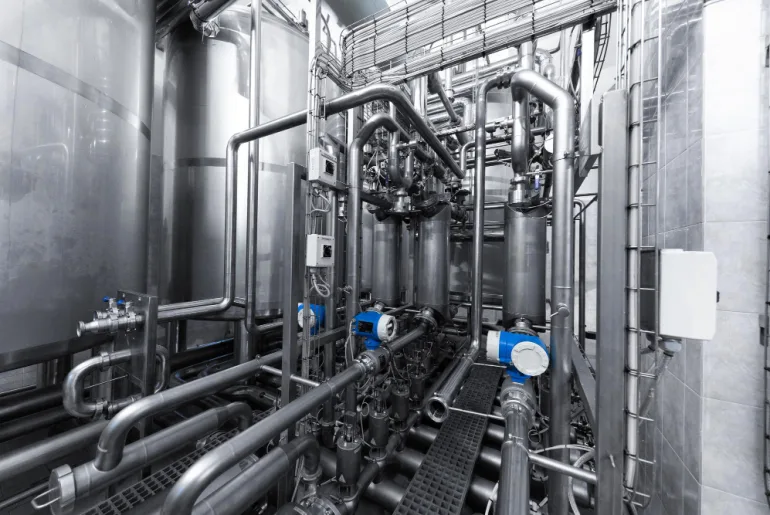Pipelines are the lifeblood of the oil and gas industry, enabling the efficient transport of valuable resources. Ensuring the integrity of these pipelines is crucial for safety, environmental responsibility, and uninterrupted operations. This article explores the significance of pipeline integrity, its challenges, and effective management strategies.
What Is Pipeline Integrity?
Pipeline integrity refers to the level of quality and condition of pipelines and associated components that are free from any flaws or damage. The continuous upkeep of pipeline integrity is crucial to ensure the safety and reliability of pipelines throughout their entire lifespan, encompassing stages such as design, manufacturing, commissioning, regular maintenance, and repairs, as well as eventual decommissioning.
What Is Pipeline Integrity Testing?
Pipeline integrity testing refers to a range of methods that are used to assess the structural integrity of a pipe. One of the most commonly used methods is hydrostatic testing. Hydrostatic testing serves as a means to evaluate the strength and durability of specific pressure vessels like plumbing systems and pipelines.
This particular test is conducted to examine the performance of the pipeline itself. By utilizing hydrostatic testing, it becomes possible to ascertain the overall operational effectiveness of the pipeline and promptly identify any potential leaks. This leak detection capability makes hydrostatic testing a crucial procedure when assessing the integrity of your pipes.
What Are The Three Steps of Doing Pipeline Integrity Management?
The process of pipeline integrity management typically involves three key steps: assessment, pipeline integrity planning, and project management. Each of these steps plays a crucial role in ensuring the safe and reliable operation of pipelines.
1. Assessment
Pipeline assessment involves carefully examining the internal and external components of pipelines, calculating their shape, modeling the flow, determining the rate of corrosion, assessing the level of risk, and more. By identifying any defects or damage on both the inside and outside of the pipelines, experts can determine their condition and prepare for necessary repairs to prevent future failures.
2. Pipeline Integrity Planning
The next step, the pipeline integrity management plan encompasses various tasks focused on maintaining or fixing pipelines. These include establishing operational guidelines and protocols, conducting inspections, performing maintenance work, monitoring pipeline conditions, and preventing corrosion. Additionally, route planning involves assessing the intended pathway and considering the environmental consequences in the surrounding area.
3. Project Management
Pipeline integrity management (PM) encompasses a range of audits to ensure the proper management of corrosion, data, suitability for operation, burst resistance, third-party verification, and more. These audits play a crucial role in assessing the condition and reliability of pipelines.
This last step helps identify potential corrosion issues, ensure accurate and efficient data management, verify the pipelines’ suitability for service, evaluate their resistance against bursts, and provide independent verification through third-party assessments.
What Does A Pipeline Integrity Engineer Do?
As a pipeline integrity engineer, you are responsible for inspecting oil, gas, or liquid pipelines, generating technical reports, and evaluating pipeline processes in real-world conditions.
The role of a pipeline integrity engineer centers on ensuring that pipeline operations adhere to safety, quality, and legal standards and requirements. As a pipeline integrity engineer, possessing the essential skills and knowledge to conduct cost-effective inspections and tests is a must. It is expected that you fulfill your job responsibilities without negatively impacting pipeline operations.
What Are The Benefits of Pipeline Integrity?
Conducting pipeline integrity assessments provides several advantages:
1. Safety
Regular assessments help identify potential issues, ensuring proactive measures are taken to prevent accidents, leaks, or failures that could compromise the safety of individuals, the public, and the environment.
2. Reliability
Maintaining pipeline integrity guarantees consistent and reliable transportation of fluids or gases. Early detection of defects or degradation allows for timely repairs, minimizing disruptions and ensuring uninterrupted operations.
3. Cost-effectiveness
Assessments optimize maintenance and repair strategies, avoiding costly emergency repairs, reducing downtime, and optimizing resource allocation.
4. Regulatory Compliance
Pipeline integrity assessments ensure adherence to regulations and industry standards, fulfilling legal obligations, and maintaining a positive reputation.
5. Environmental Protection
Prompt identification and resolution of integrity issues prevent leaks and spills, minimizing environmental harm and showcasing a commitment to sustainability.
6. Longevity
Regular assessments, coupled with proper maintenance and remediation, extend the lifespan of pipelines, preserving infrastructure investments and reducing the need for premature replacements or costly upgrades.
In summary, pipeline integrity assessments provide benefits such as enhanced safety, improved reliability, cost savings, regulatory compliance, environmental protection, and prolonged pipeline lifespan.
What Are Some Industry Standards (API & ASME) That Talks About Pipeline Integrity?
Organizations like the American Petroleum Institute (API) and the American Society of Mechanical Engineers (ASME) have developed various industry standards that focus on pipeline integrity. Here are a few noteworthy standards:
1. API 570
API 570 guides inspection, repair, alteration, and rerating of in-service piping systems. While it doesn’t directly address pipeline integrity, it helps assess piping components and ensure their fitness for continued service, indirectly contributing to pipeline integrity management.
PetroSync provides API 570 training that covers pipeline integrity comprehensively. You can gain essential skills for ensuring pipeline integrity.
2. ASME B31.3
ASME B31.3, a well-known standard, concentrates on the design, construction, and maintenance of process piping systems in industries like chemical, petroleum, and pharmaceutical. However, it does not specifically cover pipeline. While it offers guidance for ensuring the mechanical integrity of piping systems, it does not address the specific aspects and requirements of pipeline management.
PetroSync offers ASME B31.3 training programs that include a comprehensive focus on pipeline. You will gain valuable knowledge and skills to ensure the integrity of pipelines within the scope of ASME B31.3 standards.
3. API 1160
API 1160, titled Managing System Integrity for Hazardous Liquid Pipelines, offers guidance for effectively managing the integrity of pipelines transporting hazardous liquids, ensuring safe and reliable operations.
Credit header image: Freepik

SEO specialist by day, fact-checker by night. An avid reader and content writer dedicated to delivering accurate and engaging articles through research and credible sources.








